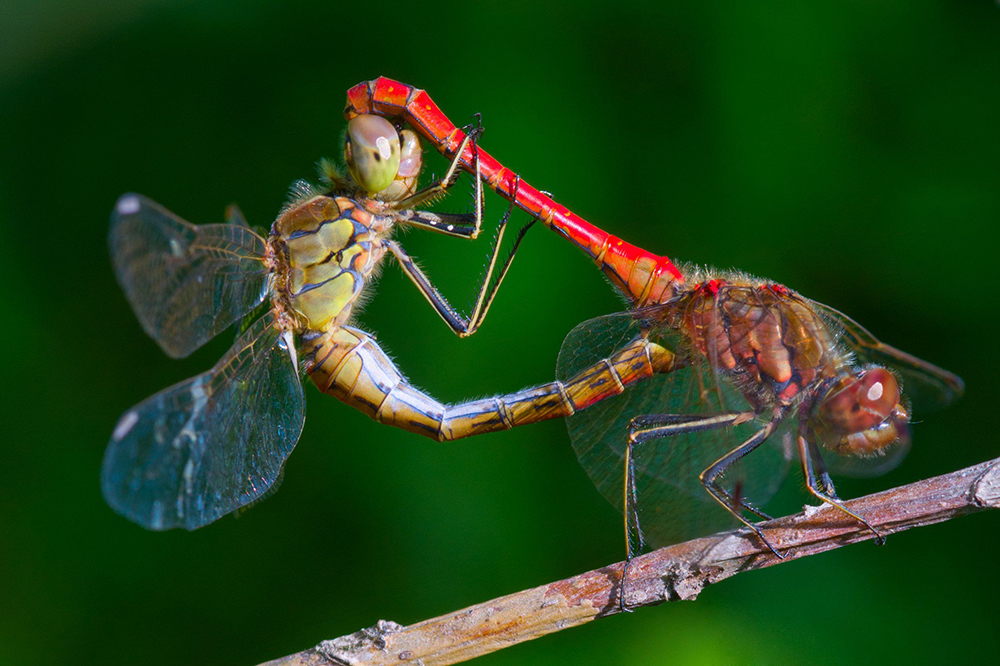In order to avoid males of the species bothering them for sex, female dragonflies fake their own deaths, falling from the sky and lying motionless on the ground until the suitor goes away.
A study by Rassim Khelifa, a zoologist from the University of Zurich is the first time scientists have seen odonates feign death as a tactic to avoid mating, and a rare instance of animals faking their own deaths for this purpose. Odonates is the order of carnivorous insects that includes dragonflies and damselflies.
Khelifa had been collecting the eggs of odonates in the Swiss Alps for experiments into how temperature affects larvae. But over the two summers he spent there, he noticed unusual behavior among female dragonflies of the species Aeshna juncea .
In a study published in the journal Ecology, he wrote that on July 5, 2015 “while I was waiting at a pond near Arosa, at about 2,000 meter elevation, I witnessed a dragonfly dive to the ground while being pursued by another dragonfly… the individual that crashed was a female, and that she was lying motionless and upside down on the ground.
“Upside down is an atypical posture for a dragonfly. The male hovered above the female for a couple seconds and then left. I expected that the female could be unconscious or even dead after her crash landing, but she surprised me by flying away quickly as I approached. The question arose: Did she just trick that male? Did she fake death to avoid male harassment? If so, this would be the first record of sexual death feigning in odonates.”
Khelifa notes there are few instances of animals faking their own deaths, with four others known to science. These include two species of robber fly, the European mantis and the spider speciesPisaura mirabilis, where the males fake death in order to avoid being killed after mating. One study describes the females of another species of dragonfly lying motionless—but researchers did not suggest it was faking death.
Over the next few months, Khelifa documented dozens of cases where females would crash land and play dead while being pursued by a male. He also looked at the reproductive behaviour of A. juncea to try to work out why females would do this.
His observations showed females would arrive at the ponds where the males were waiting to mate. Males would intercept females mid-air before copulating somewhere nearby. The male then flew away and the female laid eggs on her own, without any protection—unlike many other dragonfly species, where the male will guard the female.
“Females became vulnerable to male coercion at that time because conspecific males were constantly patrolling each corner of the pond looking for a mate,” Khelifa writes.
Further observations showed that the more male competition there was, the more likely female dragonflies were to fake their own deaths. In 86 percent of cases, females would crash to the ground. Those that kept flying “were all intercepted by a male.” “Of the 27 motionless females, 21 (77.7 percent) were successful in deceiving the coercive male,” he adds.
Khelifa suggested this behavior is common among the female of this dragonfly species, and that it could have evolved for a number of reasons: “On one hand, this behavior could have resulted from exaptation. Since death feigning already exists in the behavioral repertoire of dragonflies, females of the moorland hawker expanded the use of this anti-predatory function to avoid male coercion,” he wrote. “On the other hand, the origin of this exaptation is probably sexual conflict where each sex adopts reproductive strategies that best serve its own survival and reproductive success.”
Source: Newsweek































































































